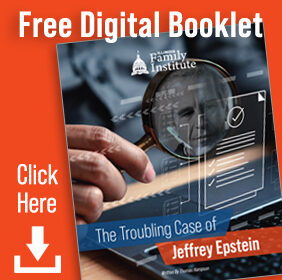
“For the mind is capable of dealing with only one kind of food;
it lives, grows and is nourished upon ideas only”
~Charlotte Mason~
In Part I, it was established that as Christians, our starting point for an educational system or approach must be rooted in our Christian worldview. Charlotte Mason’s philosophy of education, securely rooted in such, is built upon the foundation of “children are born persons.’ This individual personhood of each *child means we approach the child first and foremost from a place of respect for who he is–who God has created him as his own person to be.
Then we approach the education of this child with the understanding that his mind is the instrument of his education and that his education does not produce his mind. In other words, rather than being a container to be filled, the child’s mind, the educational instrument, needs nourishment!
What is the nourishment needed for the mind then? According to Miss Mason, it is ideas, “For the mind is capable of dealing with only one kind of food; it lives, grows and is nourished upon ideas only” and THAT is where we, the educators can be of most use. We can create an environment where ideas are served up daily as the “brain food” necessary for a child’s education.
To best assess what is worthy to be the ideas of brain food in a child’s education, it is helpful to examine what is NOT worthy. A word clearly connected with Mason’s “gentle art of learning” is the word “Twaddle.” In essence, twaddle is ‘that which is dumbed down so children may understand it.’ It is centered on the idea of making it accessible to children, bringing it to their level. It might best be assessed by evaluating whether it is something WE enjoy! If it feels boring and dumb to us, it is likely twaddle. In Mason’s own words:
“Education is a life, that life is sustained on ideas; ideas are of spiritual origin, and God has made us so that we get them chiefly as we convey them to one another, whether by word of mouth, written page, Scripture word, musical symphony, but we must sustain a child’s inner life with ideas as they sustain his body with food.”
Contained within this quote are key categories or areas, if you will, which one can use to create an environment rich in ideas as the basis of employing Charlotte Mason’s gentle art of learning in your home.
These categories are the cultural, natural, and spiritual parts of the educational environment.
Cultural:
Charlotte Mason’s decree is to “let the children at the best of life.” This means enjoying “living experiences”-life on a farm, a day at the beach, the wonders of a library. It also means experiencing firsthand the best mankind has produced in art, music, and books. An excerpt from For the Children’s Sake gives a firsthand account of this:
When I was seven years old, I arrived in a war-torn Europe, straight from the rather sterile niceness of middle class mid-America. I was a very average, ordinary little tomboy girl! One afternoon I was taken into the Rijks museum, and I walked right up to Rembrandt’s painting, Night Watch. Did the guards smile as a little girl tarried there for a long, long time? Nobody lectured me as to what I was supposed to know or think about this painting. I was not disturbed. I was left alone with Rembrandt. A magical contact! I still remember the paintings I saw in Holland as if I had been there last week instead of thirty-five years ago, when I commented, “If somebody would give me enough paint, I would paint a picture like that!” Adults may have smiled. But I had found a human link with a kindred spirit.
The idea is to let the children encounter artwork without needlessly interfering. We do not need to explain, lecture, point out to them what they should be “getting” from the encounter. Sometimes we experience the art together by talking and noticing the details the child points to, allowing time to discuss, respond, ENJOY! In other words, we trust the instrument of their education – their mind. The mind that God so amazingly created and gifted to each of us.
The same principles can be applied in the area of music culture. With Youtube, Spotify, and Pandora at our fingertips, we can easily put on some Mozart or Brahm’s while doing just about anything. The goal is not to serve it up as a lesson, “Now we are going to learn about Mozart’s music.” Instead, we simply play and enjoy while folding laundry, eating our lunch, playing hide ‘n’ seek around the house on a dreary winter day. We might set an example by making mention of bits and pieces – “that little bit reminds me of the wren we saw flitting about the bird feeder the other day. Does it remind you of anything?” There is no expectation or “must” involved. We do not require an answer. We simply model enjoying the piece.
What’s even better is that as the child is “served up” culture in the form of the great master’s work, literature from across the centuries, and music by the famous and not so famous, these elements begin to work together to bring meaning and understanding from one type of culture to another. In this way, bit by bit, ideas from culture are explored.
“Little by little,” an acorn said,
As it slowly sank in its mossy bed,
“I am improving every day,
Hidden deep in the earth away.”
Little by little, each day it grew;
Little by little, it sipped the dew;
Downward it sent out a thread-like root;
Up in the air sprung a tiny shoot.
Day after day, and year after year,
Little by little the leaves appear;
And the slender branches spread far and wide,
Till the mighty oak is the forest’s pride.
In my next installment, we will finish up the category of culture with a discussion of literature, and then explore the Spiritual and Natural categories.
*Child for the purposes of this series means a person from birth to age 18.



















